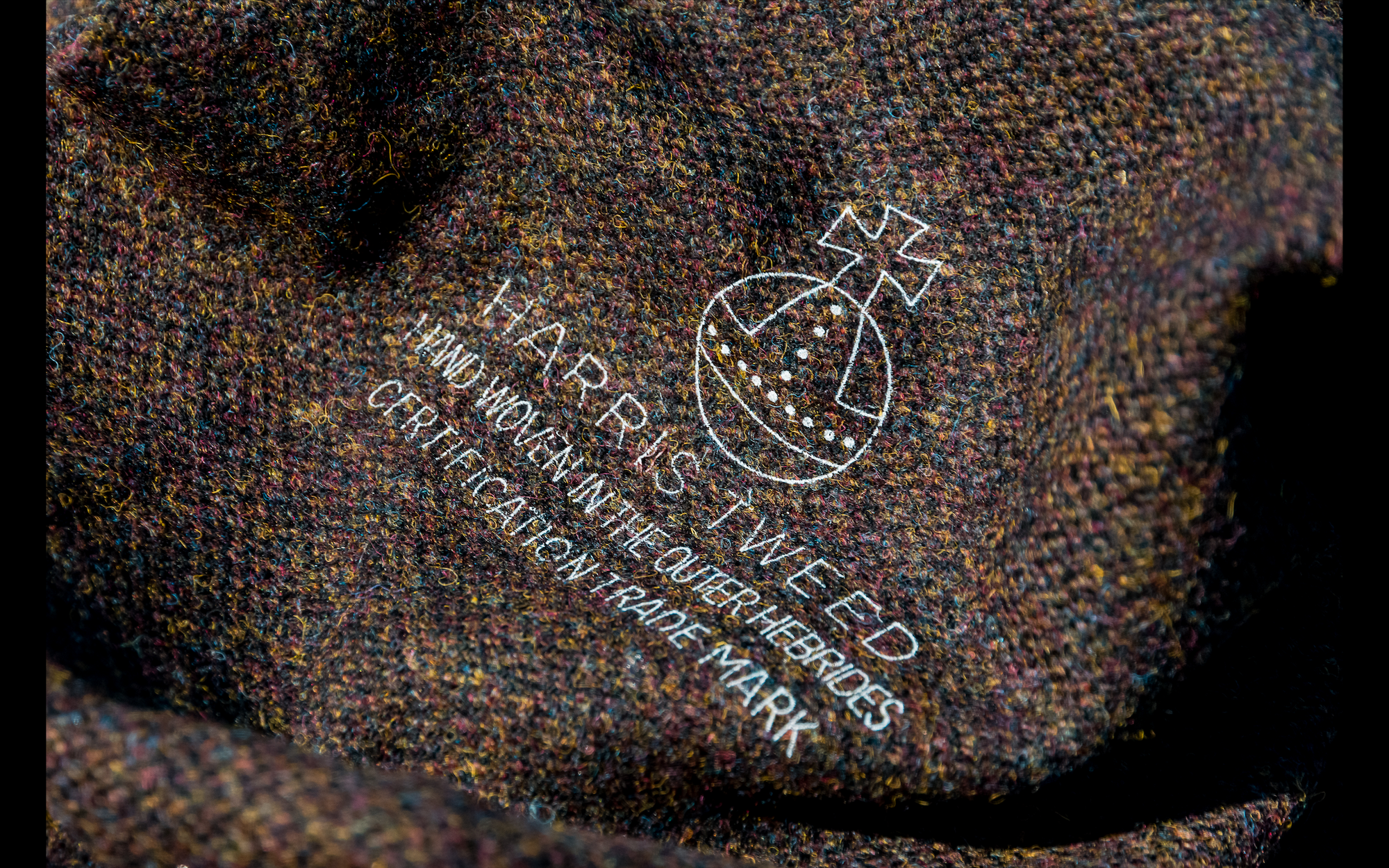The history of
Harris Tweed®

History of Harris Tweed®
For centuries the islanders of Lewis and Harris, the Uists, Benbecula and Barra have woven cloth by hand calling it Clò Mór in the original Gaelic or 'The big cloth'. Originally woven for home use and for protection from the colder climes of the highlands of Scotland. Harris Tweed® is a cloth that has been handwoven by islanders at their homes in the Outer Hebrides of Scotland, finished in the Outer Hebrides, and made from pure virgin wool dyed and spun in the Outer Hebrides.
PROTECTED BY LAW
Harris Tweed® is protected by the Harris Tweed® Act of Parliament 1993. which strictly outlines the conditions in which the cloth can genuinely be made. Authentic Harris Tweed® is issued with the Harris Tweed® Orb Certification Mark, the United Kingdom's oldest registered trademark, after inspection by the Harris Tweed Authority, the industry's governing body. The original definition attached to the Orb Trade Mark stated that: "Harris Tweed means a tweed, hand-spun, hand-woven and dyed by the crofters in the Outer Hebrides."
The original name of the cloth was tweel Scots for twill, it being woven in a twilled rather than a plain pattern. A traditional story has the name coming about almost by chance. Around 1830, a London merchant received a letter from a Hawick firm about some tweels. The London merchant misinterpreted the handwriting, understanding it to be a trade-name taken from the river Tweed that flows through the Scottish Borders. Subsequently the goods were advertised as Tweed, and the name has remained ever since.

Each meter of Harris Tweed® is created through a labour of love. It takes hours for the home weaver to set up his loom and he has a unique relationship with his loom as it weaves its magic with the wonderful natural colours. Harris Tweed® is truly the champagne of all fabrics and we are sure you will cherish your own piece of Harris Tweed® for years to come whichever gift you select.
SUSTAINABILITY
Harris Tweed® supports an age old tradition, and provide employment for over 200 island workers. To ensure its succession lots is being put in place to encourage future generations to continue the craft. The industry is looking at training and using innovation to pivot. the 100% pure wool element means the fibres are completely biodegradable and a renewable source from the Island. The Authority is working hard to make sure production levels across the industry can be met, ensuring responsible practices across the communities
